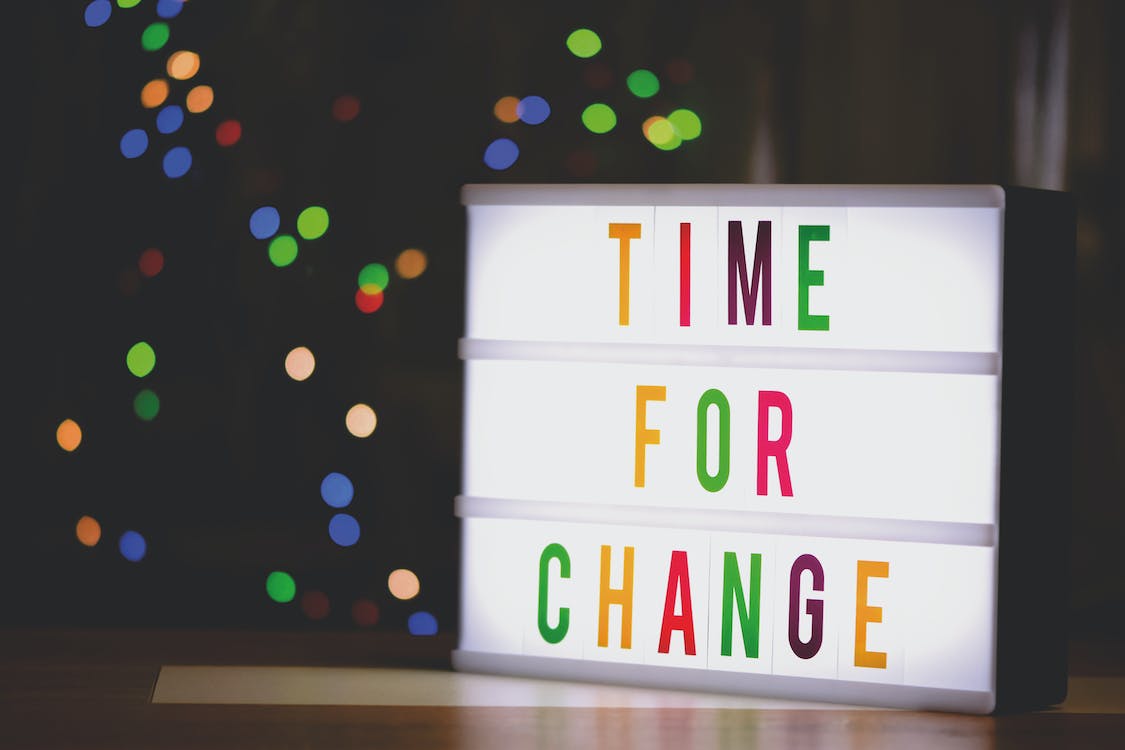Table of Contents
One of the most widely discussed topics nowadays is gender diversity at workplace.
Well, gender is not an absolute term. Rather you can say our understanding of gender isn’t absolute. Gender isn’t similar to the sex that we have at birth. Rather, it’s like your own inner consciousness that drives you to recognize an identity that your soul finds suitable fitting into. If you are privileged enough, then you will fit in with your birth-assigned sex. Otherwise, you won’t.
Our society, however, has long been a predominantly heteronormative male-dominated society. Thus, gender diversity at home and in the world is desirable but not achieved at many levels. Gender diversity doesn’t only mean about women. Gender is a huge spectrum, among which many of the identities are still not discussed or given a tag!
Let’s understand what gender diversity means!
What is gender diversity?
From childhood, we learn a popular phrase, “unity in diversity.” But unfortunately, we used this profusely while writing classroom essays on our country but never really learned to adapt to our surroundings. Similarly, our conceptions about gender are shaped by our understanding of what is normal and abnormal, according to our definitions.
But the identities that lie beyond often do not cross our understanding; even if it does, we cancel them out because that does not fit in with how we see it. Gender diversity basically then is a term that accommodates all those identities that don’t “go well” with the normativity of society.

How internet spread awareness on gender identities?
With the internet generation and revolution, people with myriad identities have connected with humans across the world, sharing gender diversities.
According to popular understanding, gender diversity included more representation of women, and if someone is a bit more aware, then transgender, that’s it. But the gender spectrum is much elaborate and detailed than those binaries.
Transgender, genderqueer, gender fluid, gender-neutral, non-binary, x-gender, and many more constitute the umbrella term gender diversity. They are all different from one another and need equal attention as the heteronormative males get in our society.
Thus, gender diversity assures recognition and respect for the identities to which we might not relate but are valid as much as our identities.
The expression of these identities has to cross big walls. At first, it’s hard to come to terms with yourself; it’s harder to make your family and friends believe it, and even harder to get accommodation in the competitive workplace.
Also, our society is so backward that those who identify with the female gender, the “second” most identified gender in the spectrum, do not get fair representation, let alone others.
So, understanding gender diversity at workplace must include an understanding of the representation of women there.
The present scenario of gender diversity at the workplace
In the global domain, McKinsey report states that women contribute 37% of Gross domestic product (GDP) globally. But if you ask how much of the workforce is constitutive of women, then that will nearly be 50 percent, again, globally.
When it comes to India, the share reduces to a much lower level, around 17 percent of GDP output in India.
Global Gender Gap 2020 suggests that it might take another hundred years to achieve gender equality. If we do not double our efforts, we might lose another ten years from those hundred in vain.
Even if they share 39 percent of the total global workforce, about 54 percent of women lost their jobs till May 2020. Also, not all women share the brunt homogeneously. Depending upon which class, religion, castes, sexuality, and many other identity parameters, the impact has changed.

Importance of gender diversity at workplace
To ensure better workability of your company, you need to get past these and be more inclusive and accommodative. Here’s why!
Gender diversity and equality will induce development in your workplace.
Firstly, if you widen the recruitment pool, then the amount of human resources you can tap is unimaginable. Different persons are abled with different skill sets. Thus if female representation is enhanced, then that productivity is also multiplied. Moreover, the collaboration between males and females provides a newer dimension to the project.
Secondly, workplace equality boosts the spirit—opportunities increase manifold, which has a catalytic effect on workability.
Thirdly, McKinsey Report suggests that companies with less gender diversity fared less in monetary returns. Gender diversity at the workplace assures high financial performance. Keep this in mind while forming your project teams.
Fourthly, if companies employ more women on the social level, then abuse and exploitation are better addressed if women have their economic agency. It also enhances a collaborative spirit in the society, thereby fuelling social cohesion.
Challenges of gender diversity in the workplace
All of these benefits and advantages do not really reflect that much in recruitment procedures. In fact, if the benefits of women are concerned, these do not seem to penetrate much deep. Also, only the employment of women in companies does not always ensure gender diversity at the workplace.
There are many challenges of gender diversity in the workplace:
Discrimination
Firstly, due to years of discrimination, fewer women get exposed to the job. In fact, in India, there is a government scheme that provides health security to women till their marriage while to men till they are 25 years of age, no matter if they get a job or not.
So, many social forces and expectations might compel them to grab a job and salary, which is otherwise for women. Consequently, many women do not even have the necessary experience required for a particular job. This reduces their hiring worth.
Hiring women for non-executive posts
Secondly, many companies hire women in non-executive posts such as independent directors. But the males, rather the men, have a general bias that they will not work under women bosses. This got Razia Sultana killed back in 13th century India. The same is continuing in today’s India.
Hence, the male employees in the executive boards have greater say and maneuver. This outlives the non-executive posts. Thus, to ensure impartiality and equal division, you should hire women at both tiers of your administration.
Decision-making excludes women
Thirdly, the decision-making process often excludes women. This is because society perceives women as someone instinctively less capable.
Aristotle, in his famous treatise on slavery, suggested that slaves are savages. Women are just after them. They do not know how to speak. To raise sons who can be as capable as a master who is a man.
Thus, the earth has evolved much since Aristotle’s time. But its inhabitants haven’t. Even today, in workplace cultures, women are seen to be incapable. Others imagine women as more imaginative, emotional, and irrational. Thus, decision-making processes tend to leave them out.
The disparity in influencing positions
Fourthly, many try to argue that the number of women at work has increased over the years. That there are more women ministers in the cabinet than ever. That there are more opportunities for women than ever.
While, obviously, some part of it is true, but does that ensure greater empowerment? Definitely, the number of women at work has increased over the years, but have you ever calculated the ratio?
This always doesn’t really mean that the whole number of women directors has increased. In many countries, the number of directorships that a woman holds is more than the number of men. This means that the same woman is contributing to the gender diversity of a company. This doesn’t mean that the companies hire more women for several individual posts.
GDP leaves out women’s work sectors
Fifthly, there are many sectors of women’s work which is not even seen as a resource pool. Thus the GDP leaves out on those.
Thus, if you want to make your company more diverse, you need to make policies that keep these challenges in mind.
The share of women in higher rungs of the corporate ladder is considerably low. Moreover, developed markets show a tendency that women filling up the senior management posts are much less.
How to enhance gender diversity at workplace?
If your company wishes to narrow down the gap between junior and management posts offered to women and eventually close it, it might adopt family care-oriented policies.
Unfortunately, down the ages, society has associated women with care responsibilities. If a man dies the same, he is an extra powerful “family-man,” while the woman continues to serve as a “family-woman” for generations without anyone’s notice. The male breadwinner debate has had a huge legacy, but the work of women has been invisiblized.
The pandemic enhanced these home care responsibilities. Many women lost their jobs due to this. The work-from-home opportunities have doubled the plight. Previously, women could move out for their work hours (only to come back to home responsibilities). But now, they have to handle everything simultaneously.
Thus, companies should have flexible working hours, giving a scope of work-life balance to women employees. So, companies with more gender diversity provide less rigid working conditions. This helps to ignite a better work environment in the workspace. This helps in retaining employees because this provides better trust and cooperation from the employers’ side.

Disadvantages of gender diversity in the workplace
Gender diversity at the workplace, while on the one hand, is very beneficial, while on the other, has its own disadvantages.
Competitive environment
Diversity helps in recruiting diverse talents. However, this might be a problem if the environment becomes too competitive, which might be a problem. Oftentimes diversity brings this in with it.
Sometimes gender diversity even creates intolerance in the workspace. The environment becomes unhealthy for the employer. Stress management then requires a huge niche in the workplace.
Also, sometimes the employer-employee relation at many places gets hampered. If the workplace is too much diversity and the employer is not open to differences, it strains the dynamics. This adds to the difficulty in reaching the required goals.
Misconstrued behavior
Polite behavior is a norm of the corporate industry. However, that standard of politeness varies from person to person. People with sensitive backgrounds may not take some jokes as light-heartedly as others, and rightly so. Unfortunately, the corporate companies aren’t really the grounds for humanitarian upliftment. Thus these types of disturbances create turbulence in the environment which is not desirable.
The importance of gender diversity surpasses drawbacks
In the face of these challenges, benefits, and disadvantages, the companies should be more sensitive to these issues. Also, employers should be more impartial. Otherwise, diversity leaves out spaces where biases can creep in. They should be more open to differences. In fact, differently-abled persons get accommodation to do their job in the USA.
If any employee complains about any discrimination, you should pay attention to that. Cancel culture has become the norm of the day. That is a hindrance to both human and workforce development.
For example, if you receive a complaint that your manager has sexually harassed a woman employee or any other employee, you should take necessary action instead of denying it. Otherwise, your company is destined to fall. Thus, acknowledging diversity at the workplace and creating an equal environment is not something natural. You have to take responsibility and enforce it.
Way forward to foster gender diversity at the workplace
As a leader in your company, create trust among your gender-diverse employee population so that they can come up to you if they face any trouble. In return, you get your multifarious benefits, as we discussed above.
Generally, recruitment and payment procedures are different for men and women. Man protests and resistances have seen the light of the day without much tangible change. Even if women are with greater qualifications tend to get lesser pay. A company that aims to eradicate these biases are more approachable.
However, many companies have sought out strategies to counter these, for example, achievement-oriented recruitment criteria. This enhances more equal promotions and evaluations. These serve as a boost for the employees.
Gender diversity in the workplace is a highly desirable thing, no doubt. But unfortunately, half of it is still a dream. But, you can start at being an open free-minded flexible individual and then follow that path in your company’s strategy building. That way, the goal will not be too far away.




